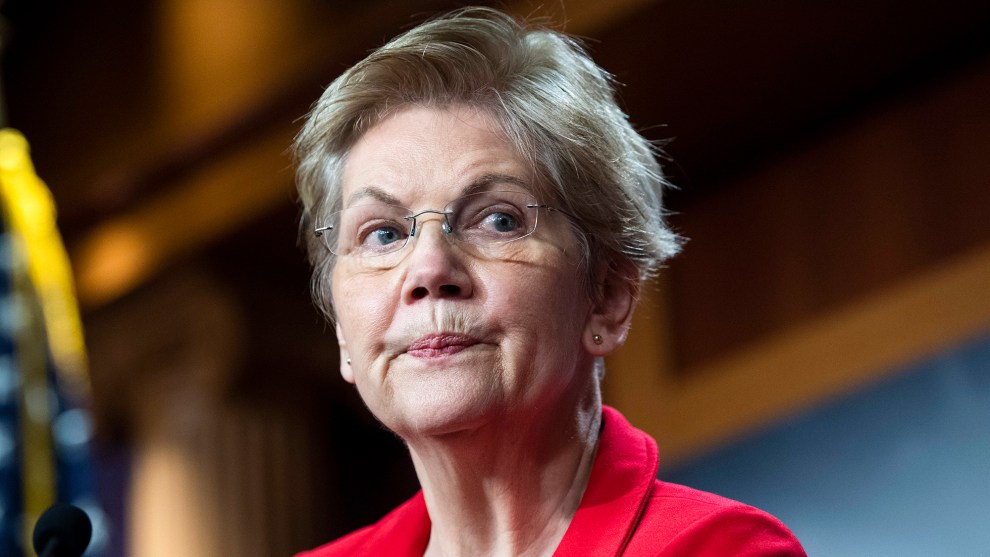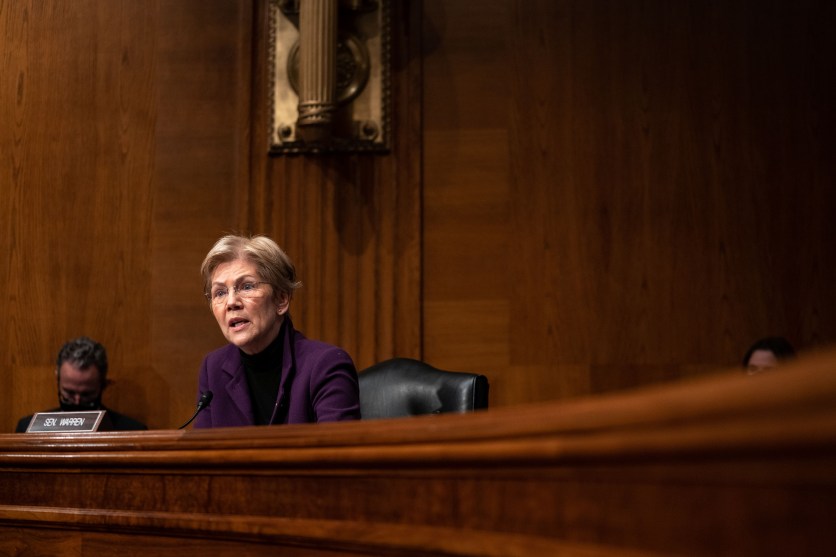
cdwheatly/Getty Images
Early in the 19th century, not long after a bunch of British colonies became the United States of America, an aging John Adams and his friend and rival Thomas Jefferson exchanged dozens of letters in which they debated the state of aristocracy in the new republic. The Pulitzer Prize–winning historian Joseph Ellis recounted this exchange in his 2018 book, American Dialogue, which Mother Jones excerpted. Ellis writes:
Adams’ chief heresy was his direct refutation of Jefferson’s most famous words, that “all men are created equal.” Perhaps in some lofty humanistic sense this was true, Adams wrote, but “Inequalities of Mind and Body are so established by God Almighty in the constitution of Human Nature that no Art or policy can ever plain them down to a level.” Aristocracies, he therefore insisted, were an inevitable and permanent fixture in all human societies—including the young republic he and Jefferson had helped into being.
Jefferson wrote back to suggest his friend’s argument was true of Europe, where feudal privileges, inherited titles, and limited economic opportunities created conditions that sustained class distinctions. In America, though, the absence of laws such as primogeniture and entail, and the existence of an unspoiled continent, meant “everyone may have land to labor for himself as he chooses,” and thus enduring elites were unlikely here. Given such favorable conditions, Jefferson argued, it was reasonable to expect that “rank, and birth, and tinsel-aristocracy will finally shrink into insignificance,” resulting in a roughly egalitarian, middle-class society.
Adams was unconvinced. “No Romance could be more amusing,” he replied, than the belief that the United States would prove an exception to the dominant pattern of economic inequality throughout history. “As long as Property exists,” he observed, “it will accumulate in Individuals and Families…the Snow ball will grow as it rolls.”
During a subsequent interview for my new book about America’s superrich, I asked Gabriel Zucman, an economist and expert on economic inequality at the University of California, Berkeley, which founder’s outlook he thought was more prescient. He replied that our situation in America today is arguably worse than the one Adams feared: not a hereditary aristocracy but an economic one “that can present itself as more legitimate than the old-world aristocracy, where you were rich and powerful for totally arbitrary reasons.”
Zucman acknowledged that plenty of Americans are still rich and powerful for arbitrary reasons (Jared Kushner and Kim Kardashian come to mind), but added that “there are enough cases of success that look like meritocracy to give an impression of legitimacy to those who are on the top of the income and wealth pyramid.”
We Americans like to view ourselves as an egalitarian and upwardly mobile society, but this is demonstrably false. The rags-to-riches stories we fetishize are, in fact, quite rare. Compared with Europeans, for example, researchers have found that Americans are “over-optimistic” about their prospects for moving up in the world. As Lily Batchelder, President Biden’s nominee for assistant secretary of the Treasury, put it in a 2020 book chapter:
Relative to other countries, financial success in the United States depends heavily on the circumstances of one’s birth. On average, a father in the United States passes on roughly one-half of his economic advantage or disadvantage to his son (Corak 2013). Among other high-income countries, the comparable figure is typically about one-third, and in several countries it is one-fifth. There are even larger mobility barriers among some communities of color. Black men in particular have far less upward mobility and greater downward mobility than others, and to such a large extent that the current black–white income gap is not projected to change at all if these mobility dynamics persist (Chetty et al. 2018).
But America’s aristocracy is thriving, thank you very much.
You may have noticed a spate of recent stories about how the superrich avoid income taxes and inheritance taxes, and how the IRS, which the Republicans have eviscerated, is no longer up to the task of auditing the wealthiest business owners and their opaque partnerships. All of these factors have contributed to a proliferation of dynastic wealth. A new report from the Institute for Policy Studies, a progressive nonprofit, shows this proliferation in quantitative terms.
“Entrenched wealth dynasties combined with stagnant social mobility pose fundamental challenges to US society and the reality of opportunity,” the IPS report notes. “We understandably admire entrepreneurs who invent things or build companies—almost always with crucial help from colleagues, workers, and taxpayer-funded infrastructure. But at a certain stage, some of these creators—or their descendants—shift resources to consolidate their wealth, fend off competition, and create monopolies.”
Among the highlights (some of which I have annotated):
- In 2020, America’s top 50 dynasties held $1.2 trillion in assets.
- The combined wealth of the 27 families that appeared both on the Forbes 400 list in 1983 and on Forbes Billion-Dollar Dynasties list in 2020, grew more than 1,000 percent during that period. That’s more than 10 times the growth rate of the typical American family’s wealth.
- Those same families saw a median increase in net worth, adjusted for inflation, of 904 percent. The five wealthiest ones saw their collective wealth grow by nearly 2,500 percent.
- Topping the list are the Waltons, America’s wealthiest dynasty—a family notorious for its tax-avoidance skills. In 1983, Walmart founder Sam Walton and his kids were worth $5.6 billion (2020 dollars). By the end of 2020, Sam’s descendants had amassed a combined net worth exceeding $247 billion—a 4,320 percent increase, adjusted for inflation.
- The Mars candy family—one of at least nine US dynasties that has lobbied in recent years to repeal federal inheritance taxes, according to the nonprofit Public Citizen—saw its wealth increase by more than 3,500 percent. The assets of the estate of cosmetics magnate Estée Lauder and her descendants have grown from $1.6 billion in 1983 (2020 dollars) to $40 billion in 2020—their wealth has more than doubled since 2015.
- Dynastic wealth is persistent. On the Forbes 2020 list, 16 of the top 20 families also appeared on the 1983 Forbes list. Only four were new.
- Since March 2020, when the federal government first started responding to the COVID pandemic, the top 10 dynasties on the Forbes list have seen a median increase of 25 percent in their fortunes. (I previously covered IPS’s eye-popping data on billionaire pandemic profiteers.)
- These families wield formidable political power. Some of the biggest spend millions lobbying for favorable tax, labor, and trade policies. The Cox, Brown, Walton, Marriott, and Simplot families, among others, also have corporate PACs that distribute millions of dollars to candidates and campaigns. Individual family members give to candidates and PACs as well, serve on federal policy advisory boards, and have held prominent elected roles. Dynastic families have spawned Democratic governors such as Jay Prizker in Illinois and Ohio’s James Cox, presidential Cabinet members, and top executives—Nelson Rockefeller served as Republican President Gerald Ford’s vice president.
- Many such families use philanthropy to cement their social status and further their business interests. (This was certainly the case with the Sacklers, the billionaire OxyContin clan responsible for kickstarting the US opioid epidemic, as Patrick Radden Keefe points out in his recent book, Empire of Pain.) The top 50 dynasties have set up, among them, more than 248 foundations with more than $51 billion in assets. While some families distribute money to groups that serve the public interest, others bankroll organizations that aim to cut taxes further on the wealthy and roll back regulations that constrain corporate profits. (In Dark Money, investigative reporter Jane Mayer describes how the Kochs, the Scaifes, the Coorses, the Olins, and the DeVoses “weaponized” philanthropy to serve their own interests.)
If you need further evidence of America’s dynastic bloat, consider the rise of the family office. You may not have heard the term, and why would you? After all, these are private companies that extraordinarily wealthy families create solely to manage their investments and personal affairs. According to Ernst & Young’s “Family Office Guide,” these entities had their forebears in sixth-century Europe, when kings employed stewards to mind the royal wealth and that of favored aristocrats—hence the expression “financial stewardship.”
The precursor to the modern family office came about in 1838, when the family of financier JP Morgan established the House of Morgan to oversee its sprawling assets. The Rockefellers followed in 1882, and the office they created is still in operation. As of 2018, according to EY, there were at least 10,000 such entities worldwide, at least half of which didn’t exist before 2000—the typical family was worth at least $200 million. Here’s a primer from Chuck Collins, a senior scholar at the Institute for Policy Studies and the author of a recent book, The Wealth Hoarders.
The billionaires themselves rarely do the lobbying and financial voodoo that let them grow and protect their wealth. Rather it’s the minions in their exceedingly low-key offices. You’d never even notice Walton Enterprises, LLC, the entity that keeps the Walmart dynasty humming. This family office is located in a nondescript building in downtown Bentonville, Arkansas, across the street from a Cajun restaurant called the Flying Fish. (“Mudbugs Are Here,” noted a recent advertising banner.) A Flying Fish hostess told me she’d heard of Walton Enterprises only because its employees sometimes eat there, “but we don’t know what it is or what they do.”
They do a lot of stuff. One wealth professional I interviewed got her start in a multibillionaire’s family office with dozens of employees, including real estate experts, estate lawyers, accountants, financiers, and aircraft managers. Larger offices hire CEOs and chief information officers, and are overseen by boards consisting of family members and outsiders. Staffers pay the family’s bills and wrangle its club memberships. They manage vacation properties, planes, yachts, and household employees. They book meetings, travel, and medical appointments. They work with architects and contractors and security consultants and see to the education and financial literacy of children and grandchildren. They devise “tax-efficient” strategies for philanthropy, insurance, and risk-management, plan parties and vacations, plan weddings, funerals, and reunions—the tasks are endless. A full-service office, EY estimates, costs $10 million a year or more to operate.
But these operations often pay for themselves and then some. Because what they do really, really well is tax avoidance. The ultimate task of these private armies of lawyers, accountants, and lobbyists is the perpetuation of dynasties that come together when necessary, like the cells of a slime mold, to create the conditions under which the aristocracy can thrive and reproduce. There are three essential conditions: The wealth must multiply fast enough to sustain an ever-expanding family’s financial dominance and political clout. Assets must be easily transferable from one generation to the next. And tax policies must be put in place that allow the family to share as little of their wealth as possible with the government.
Once lone wolves, family offices have come together via organizations such as the Family Office Exchange and the Family Office Association, which hold workshops, panels, and conferences, and share “best practices.” They advance their mutual interests through a political group called the Private Investor Coalition.
In the wake of the Great Recession, as part of the sweeping package of reforms in the Dodd-Frank financial legislation, the Obama administration and congressional Democrats proposed to make private investment partnerships—private equity funds, hedge funds, and the like—divulge more information about their holdings. The feds needed this data because the highly leveraged trading of risky mortgage debt by Wall Street banks had just about destroyed the economy, and they didn’t want that to happen again.
But family offices felt they should be exempt from regulation. So the Private Investor Coalition hired Venable LLP, a law firm with a serious political pedigree, to get the job done. Venable dispatched three lobbyists to Capitol Hill. One of them was Jake Sehar, a former longtime aide to Sen. Joe Biden, who by this time was vice president.
The family offices got their exemption. As a result, the holdings of thousands of entities with trillions of dollars in invested assets—including hedge funds that converted themselves into “family funds” to escape federal scrutiny—remain a black box to financial regulators. This opacity, as Wall Street executive turned reformist Alexis Goldstein wrote in a recent New York Times opinion piece, could have destabilizing effects on the economy. Goldstein described how the spectacular implosion of one family fund, Archegos Capital Management, had cost its lenders, Morgan Stanley and Credit Suisse, more than $10 billion. “Whether an obscure family fund survives isn’t important,” she wrote, “unless its blowup threatens to crash the banks that house people’s savings.”
But the mere existence and behavior of these powerful-yet-obscure entities is in fact vitally important. The perpetuation of the dynasties as a protected class, after all—their juice in Washington, DC, and their ability to pursue their financial self-interest with minimal scrutiny, even from the IRS—directly results in a smaller slice of the economic pie for everybody else in America. As former Sen. Russ Feingold, who saw his signature campaign finance reform legislation (McCain-Feingold) gutted by a series of federal court decisions, aptly put it to me: “We’ve seen this society, our economy, and our political system all taken over by very powerful, wealthy interests who show no ability to contain themselves” in terms of wanting to turn even public programs such as COVID relief bills, “into private money-making operations.”
















